What's it like to be a feeder club? How Vitesse fans really see their Chelsea partnership
Since the Eredivisie outfit formed a 'special relationship' with Chelsea six years ago, 19 players have left London for a loan spell in the Netherlands. FFT's Joe Brewin hopped to Holland to examine the alleged identity crisis...
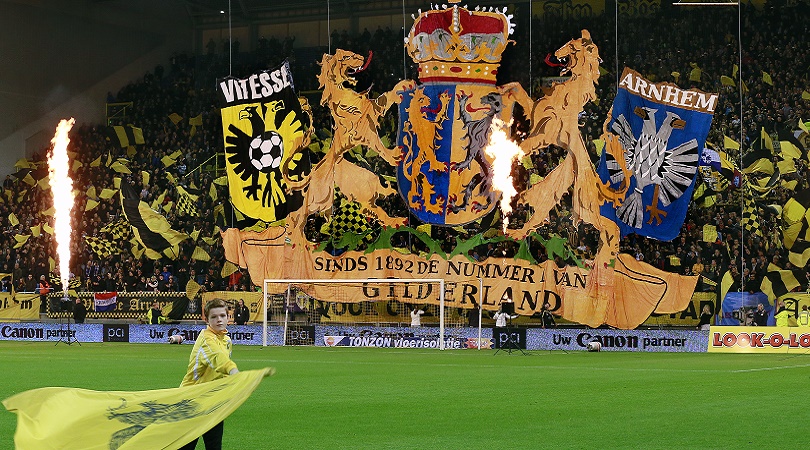
“It was an absolute nightmare – the worst experience of my life... but it probably saved my career.”
Sam Hutchinson isn’t mincing his words when he tells FourFourTwo of the paradox that was his time on loan at Vitesse Arnhem in 2013. The versatile enforcer, now 26 and playing for Sheffield Wednesday, was one of six Chelsea players to swap London for Arnhem that summer as part of the controversial loan arrangement between the two clubs, now in its sixth season.
“I was pretty much forced to go,” Hutchinson sighs. “My agent rang on the day my daughter was born and said that Chelsea thought it was best for me. I didn’t want to go. I was injured. But I didn’t realise that I wasn’t going out there to play – I was going out there to see a physio. Luckily he was amazing and got me fit in six weeks, but they still didn’t play me. It was frustrating. I came home after four months.”
Exodus to Arnhem
It’s difficult to really have the spirit in the team, because all of the young players come to play but still like to go back to Chelsea afterwards
Hutchinson is one of 19 players to have joined Vitesse since the club’s 2010 takeover by Georgian businessman Merab Jordania, an associate of Roman Abramovich who passed over control in October 2013 to the Russian Alexander Chigirinsky, another pal of the Chelsea chief. With it, Vitesse became the first ever Dutch club with foreign ownership.
Naturally it has irked some opposition fans, who have labelled the Eredivisie’s oldest club ‘Chelsea B’ and suggested they do some soul-searching. They’re not alone, either. “It seems to me that people have lost a connection with the club since this agreement has been in place,” suggested Ronald Koeman, Vitesse boss in 2000/01, before Southampton’s Europa League qualifier against his old club back in July. “Every season they have a different team. It’s difficult to really have the spirit in the team, because all of the young players come to play but still like to go back to Chelsea afterwards.
“In my time, we played in front of 25,000 or 26,000 people every home game. Now if they play against Ajax, PSV or Feyenoord, there are 20,000 or 22,000 maximum.”
Get FourFourTwo Newsletter
The best features, fun and footballing quizzes, straight to your inbox every week.
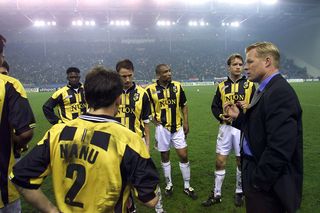
It’s a view some Vitesse fans share at times. “You have your moments,” says Olaf, a fan of 27 years’ standing. “There are times I wish we wouldn’t take their players anymore, and use only our youth. It depends on who they send us. Every trainer says ‘I make my own decisions’ but I really don’t know if that’s true.
“What has it brought Chelsea? They have bought one player from us, Marco van Ginkel [in 2013], but I don’t know how it helps them, sending their players to Vitesse.”
Another supporter, Willem, adds: “We don’t really mind Chelsea; it’s just the uncertainty of having an owner who is never here and doesn’t show his face. In the past we had an owner who people could relate to.”
But is the partnership – investigated and cleared by the Dutch FA – just as it seems on the surface? Are Vitesse really losing their identity, acting as a controlled dumping ground for Chelsea’s gain?
Up-and-down existence
Fortunes improved the following decade when the likes of Dejan Curovic, Sander Westerveld and academy star Roy Makaay helped secure them qualification for the UEFA Cup on a regular basis
It’s a chilly Saturday night when FFT visits the GelreDome for a home game against Willem II, to find out the truth from those who should know a thing or two.
Vitesse fans have suffered more than most. They’ve never seen their side win major domestic silverware; in fact, the team has broken the monopoly of the Dutch top three only once since 1915. Vitesse spent almost all of the 1980s in the second division, earning the unwanted moniker ‘FC Hollywood-upon-Rhine’ (“because every day was like a soap opera,” grumbles one supporter). Fortunes improved the following decade when the likes of Dejan Curovic, Sander Westerveld and academy star Roy Makaay helped secure them qualification for the UEFA Cup on a regular basis.
But then came the spending. Vitesse had lived fairly prudently during their success, but in a bid to crack the top three in 2000/01, they handed a greenhorn manager a £10 million transfer kitty: one R. Koeman. The results weren’t good. Vitesse finished sixth and posted only one top-half finish from 2003-11, all while there were books to be balanced. By the time Jordania came along in 2010, there were few alternatives. The club was on its knees.
“Vitesse is one of the old ladies of the Eredivisie, but for 15 years it was in a very bad mood and there was no money left,” says Niels, almost 40 years a Vitesse fan. “So when a foreign owner arrived and said ‘I have a solution: a lot of money and a connection with Chelsea’... well, it was the only option.”

Back on their feet
Its population of around 150,000 is smaller than that of Swindon, and the fans of its football club are a notoriously fickle bunch
Arnhem is not a large city. Its population of around 150,000 is smaller than that of Swindon, and the fans of its football club are a notoriously fickle bunch, as Niels attests.
“In the ’70s and ’80s we were a club with a maximum of 10,000 fans – sometimes as few as 6,000,” he tells FFT. “Then we built a big stadium, and during the time Koeman was our manager it was very good – 20,000 people came. So that’s his idea of Vitesse. But it was an exception. Now we have maybe 16,000 fans and that’s normal. We have a stadium of 25,000 so it looks empty, which makes people think there’s no link with the region.”

“They don’t even come here when it’s good,” chuckles 51-year-old fan Stef, once chairman of the supporters’ club. “The years between 2002 and 2010 had been bad – really hard. We had seen the club going down. It was almost gone.”
FFT is here to gauge feelings towards Chelsea in this quiet part of the eastern Netherlands, but to understand them it’s important to remember where Vitesse have come from – and, importantly, who they are today.
In control
It’s immediately clear that Vitesse’s core group of fans are a fiercely loyal bunch who take questions of their club’s integrity with the utmost seriousness
Upon arrival we’re ushered into the GelreDome’s brand new supporters’ home, the stadium’s on-site clubhouse owned by the fans with a mortgage from owner Chigirinsky. It’s immediately clear that Vitesse’s core group of fans are a fiercely loyal bunch who take questions of their club’s integrity with the utmost seriousness. When it’s put to them that their partnership with the west Londoners is slowly chipping away at the club’s identity, they are unequivocal in their rebuttal.
“Vitesse is still Vitesse,” insists Stef. “There is still a golden share which is owned by the club and not by Chigirinsky, so the city is secured, the colours are secured and even the shirt is secured – a few years ago they tried to change it and take the stripes off, but that wasn’t going to happen without permission.
“I think it’s OK to have a co-operation with Chelsea so long as you are still the boss in your own house. I have the impression we are.”
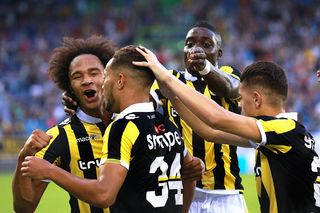
Anwar, a 28-year-old Vitesse nut, adds: “Of course we get some Chelsea players here every year, but the manager can make his own choice about who is playing in the team. In the past few years we had some players who played only a couple of matches, like Ulises Davila [in 2011/12] who got subbed off at half-time in one game and was terrible.”
Envious opponents?
Vitesse fans have grown used to opposition supporters mocking their influx of young Blues each year, although there’s a strong suspicion that those following their fellow Eredivisie sides might simply be jealous
This year Vitesse have five Chelsea hopefuls: 2015 FA Youth Cup winners Dominic Solanke and Izzy Brown, 20-year-old midfielder Lewis Baker, Brazilian Nathan and Serbian Danilo Pantic. Baker and Solanke have been regular starters – before the latter’s Achilles injury in January – while Brown and Nathan often appear off the bench.
Vitesse fans have grown used to opposition supporters mocking their influx of young Blues each year, although there’s a strong suspicion that those following their fellow Eredivisie sides might simply be jealous.
“Sure, they moan that we’re Chelsea 2.0,” admits Anwar. “So we just sing back: ‘We’re Chelsea II, but who the f**k are you?’”
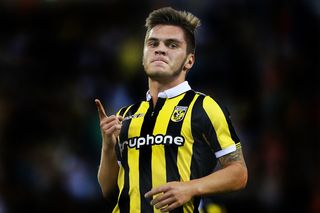
“Nijmegen [Vitesse’s fierce rivals] are the worst, but there’s a Chelsea player there as well,” notes Stef, referring to right-back Todd Kane. “They have no right to criticise. So many people say ‘We would never do that’, but every club in the Netherlands has financial problems except Ajax. But even for them, if a big investor suddenly comes and says he will invest more than €100m, the club will say yes – and every supporter will be happy.
Great win today against Vitesse! Buzzing for the fans. They deserve it! April 3, 2016
“Then again, you can look at [ADO] Den Haag, who were taken over by a Chinese guy in June 2014. He promised them €2.9m and nothing happened. But still the club spent that money and now they have problems.”
Uncertain start
Jordania completed his takeover 10 days into the new season, and within a fortnight Vitesse had eight new players – including the first three Chelsea imports, one of them Nemanja Matic – as part of the deal
When one-time Georgian national team coach Jordania swooped to save Vitesse in 2010, the fans were divided. Sure, the club was being hauled out of its dire financial situation and a threadbare squad would be bolstered, but they’d need some help from elsewhere. Jordania completed his takeover 10 days into the new season, and within a fortnight Vitesse had eight new players – including the first three Chelsea imports, one of them Nemanja Matic – as part of the deal.
“Some people thought top players would come over, but in a few years it became clear that it would just be a lot of youth players,” says fan Niels. “There was a different feeling. At first we didn’t have many players and had to wait for Chelsea to send us some. It’s more balanced now.”
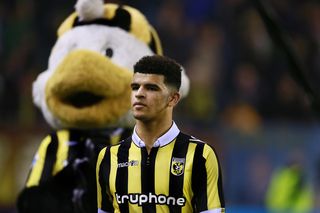
Over time, Vitesse fans’ fears of being controlled by the west Londoners have alleviated, even amid claims made by Jordania in 2014 that suggested Chelsea ‘would not allow’ Vitesse to qualify for the Champions League in case their linked ownership became an issue with UEFA. “Jordania also said he would cut off the fingers of our general manager,” smiles Stef. “He was a pleasant man to talk to, but he was full of s**t.”
Working together
Sometimes I told Chelsea that I wasn’t satisfied with a certain player, and then they would have a serious conversation with them
At first the Eredivisie club had little say in which players came their way, but things have changed over time thanks to communication between Chelsea technical director Michael Emenalo, their dedicated loan department and Vitesse’s head honchos.
Peter Bosz, Vitesse manager from the summer of 2013 until his departure to Maccabi Tel Aviv in January this year, tells FFT: “I was really positive about it – I saw the link developing. I really didn’t know what to expect at first. In the beginning, they had some players they wanted to see with us. After that we told them which positions we needed players for, and our scouting department went to London to watch them. Then we said to Chelsea: ‘OK, if we can get that player for that position it would be wonderful’.”
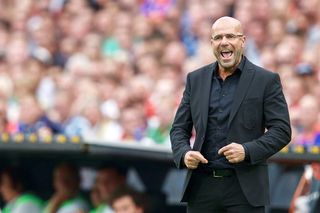
Contrary to assumptions, Bosz wasn’t afraid to bench his borrowed Blues when necessary. “There was no pressure on me whatsoever,” he reveals. “I spoke with Michael [Emenalo] maybe once a week to give him updates. Sometimes I told Chelsea that I wasn’t satisfied with a certain player, and then they would have a serious conversation with them. All they asked for was an explanation.”
It’s not as if the young Blues don’t care about their temporary employers, either. Before Christmas, Brown and Baker turned up at a supporters-run volunteers’ night to lend a hand, Brown offering champagne on the door (in Dutch) while Baker cooked in the kitchen. Chelsea’s youngsters are more often than not a welcome sight. “We couldn’t afford these players ourselves,” says Niels.
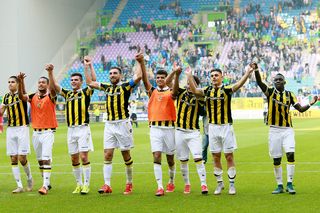
But even he admits the situation has its downsides: “We’ve made a lot of progress and qualified for the Europa League, but then the players are thrown back to London and we have to start the season early in Europe.”
Not out of context
Vitesse’s academy hit a rough patch when the money dried up, but now boast an international development centre ranked among the best six in the Netherlands
For Bosz, however, the high turnover of players simply comes with managing in Dutch football. “A lot of people told me: ‘Oh, you have to change those players every year’,” he says. “But hey, if you look at the Dutch players there, some were also only there for a year.
“It’s part of modern football, especially in Holland. We don’t have so much money and the really good players will move to the top clubs either here or abroad. We could never have signed a player like Bertrand Traore if we weren’t working with Chelsea.”
Vitesse have certainly progressed on the pitch – but what of the future? One thing on which everyone agrees is the need for their short-term stars to stick around longer. Luckily for them, those conversations have begun.
“It would be better for the players who come from Chelsea to stay for two years,” says 29-year-old supporter Saunne, whose point is quickly validated by her partner Anwar. “Look at Traore, who was here for one-and-a-half seasons,” he says. “In the first half-year he really wasn’t good, and in the summer they said he would come back. We weren’t happy – but then he became our star player.”
Vitesse’s own academy is improving: they hit a rough patch when the money dried up, but now boast an international development centre ranked among the best six in the Netherlands. Last season, teenage right-back Kevin Diks was able to force his way into the first team by ousting Brazilian Chelsea loanee Wallace.
Long-term, the club is also protected against owner Chigirinsky getting bored and withdrawing his wallet. “If he wants to pull the plug he has to sell,” says supporter Stef. “But the contract guarantees he has to pay the players’ salaries for 18 months. We would be lower than we are now, but we would still be Vitesse. It wouldn’t be the end.”
Club trumps all
Farewells bid, FFT braves the breezy chill to see the on-pitch plan in action. Five minutes before kick-off, Vitesse’s eagle flies a lap of the pitch as Willem’s rowdy gaggle of fans make a racket in the corner. Heavy drums build up to the players’ introduction, which changes quickly and awkwardly to Status Quo’s Whatever You Want (no, we’re not sure why either) as they trudge out.
Tonight only one of Chelsea’s five temps are starting, as central midfielder Baker is forced to play up front in the absence of a fit striker. It’s quickly clear that he is technically superior to his team-mates, but his influence is soon limited. Chances are few and far between.
Five minutes before half-time, the Willem fans break into a chant of “This is the worst trip I’ve ever been on” in perfect English. Even Vitesse’s mascot can’t be bothered, spending five minutes talking to a steward.
Disaster strikes after half-time. Around 60 seconds after Chelsea’s Nathan comes on, Willem score when 5ft 7in winger Terell Ondaan heads home what proves to be the winner, sending the jubilant travelling contingent scurrying like excitable macaques up the perspex walls that pen them in.
Vitesse toil, but an equaliser never looks likely despite Brown’s introduction with 15 minutes remaining. As white handkerchiefs of protest flutter, the biggest cheer of the entire night is reserved for Willem sub Frank van der Struijk – the former Vitesse defender who once saluted rival Nijmegen fans with two fingers.
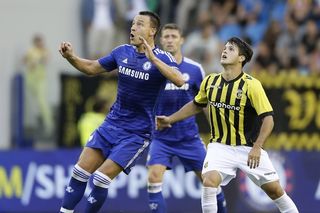
In a way, though, it’s a fitting demonstration of what Vitesse are really about. “The fans follow Vitesse because it’s Vitesse,” concludes Stef. “It’s not about the players; it’s not about the manager; it’s not about the management. It’s about the club, the colours and meeting your friends. It’s in your heart, not on the pitch.”
And that’s something Chelsea can’t lend them.
This feature first appeared in the May 2016 issue of FourFourTwo magazine. Subscribe!
Joe was the Deputy Editor at FourFourTwo until 2022, having risen through the FFT academy and been on the brand since 2013 in various capacities.
By weekend and frustrating midweek night he is a Leicester City fan, and in 2020 co-wrote the autobiography of former Foxes winger Matt Piper – subsequently listed for both the Telegraph and William Hill Sports Book of the Year awards.
‘Graeme Souness used to line us up vs the English lads at training. We had a proper scrap one day’ Ally McCoist recalls the legendary England vs Scotland training games at Rangers

‘Milan didn’t collapse against Liverpool in Istanbul. We lost focus for six minutes – for the other 114, we played an extraordinary, beautiful game’: AC legend claims they were 'extraordinary' against Reds in 2005 Champions League final
Most Popular


